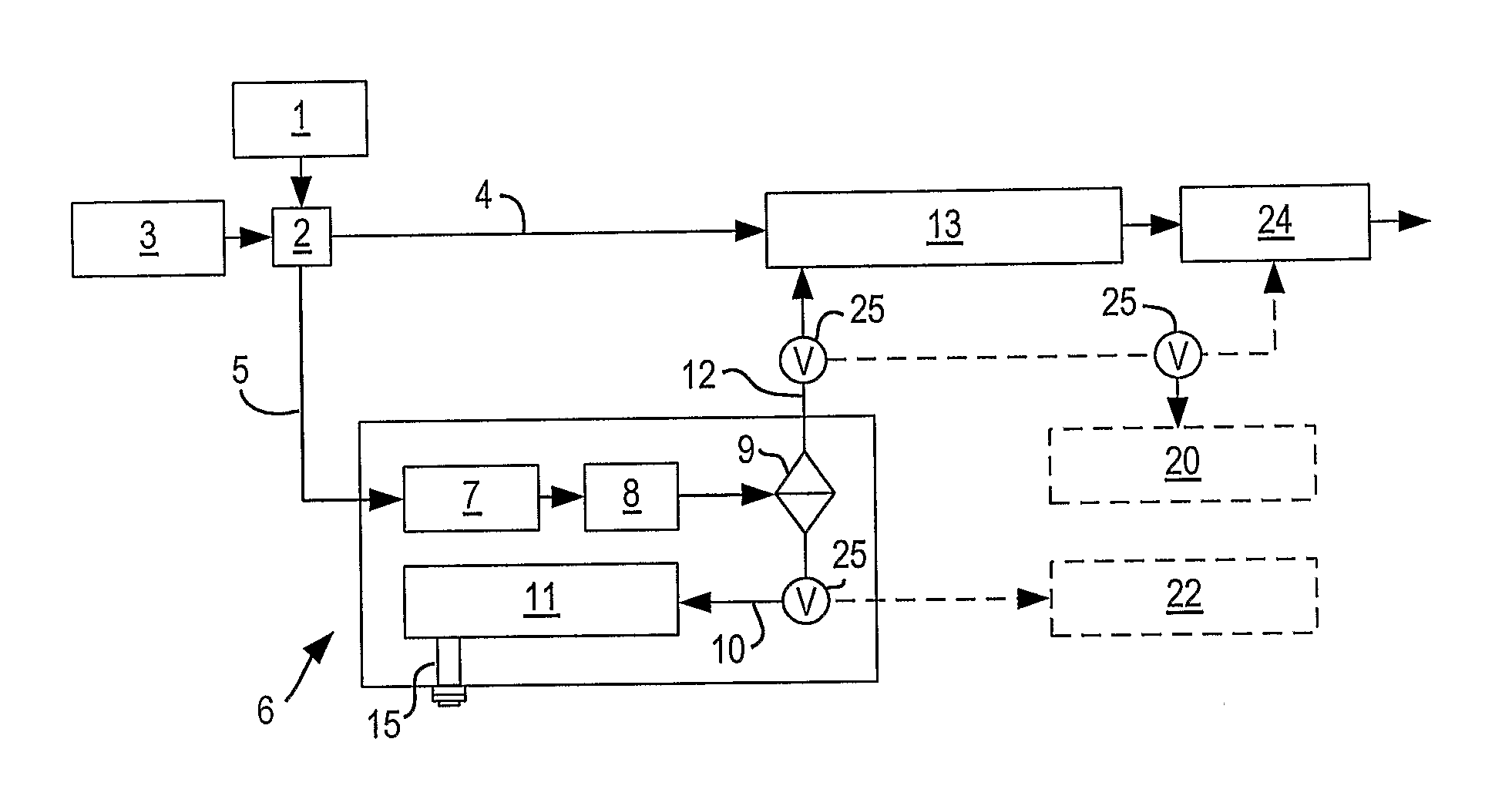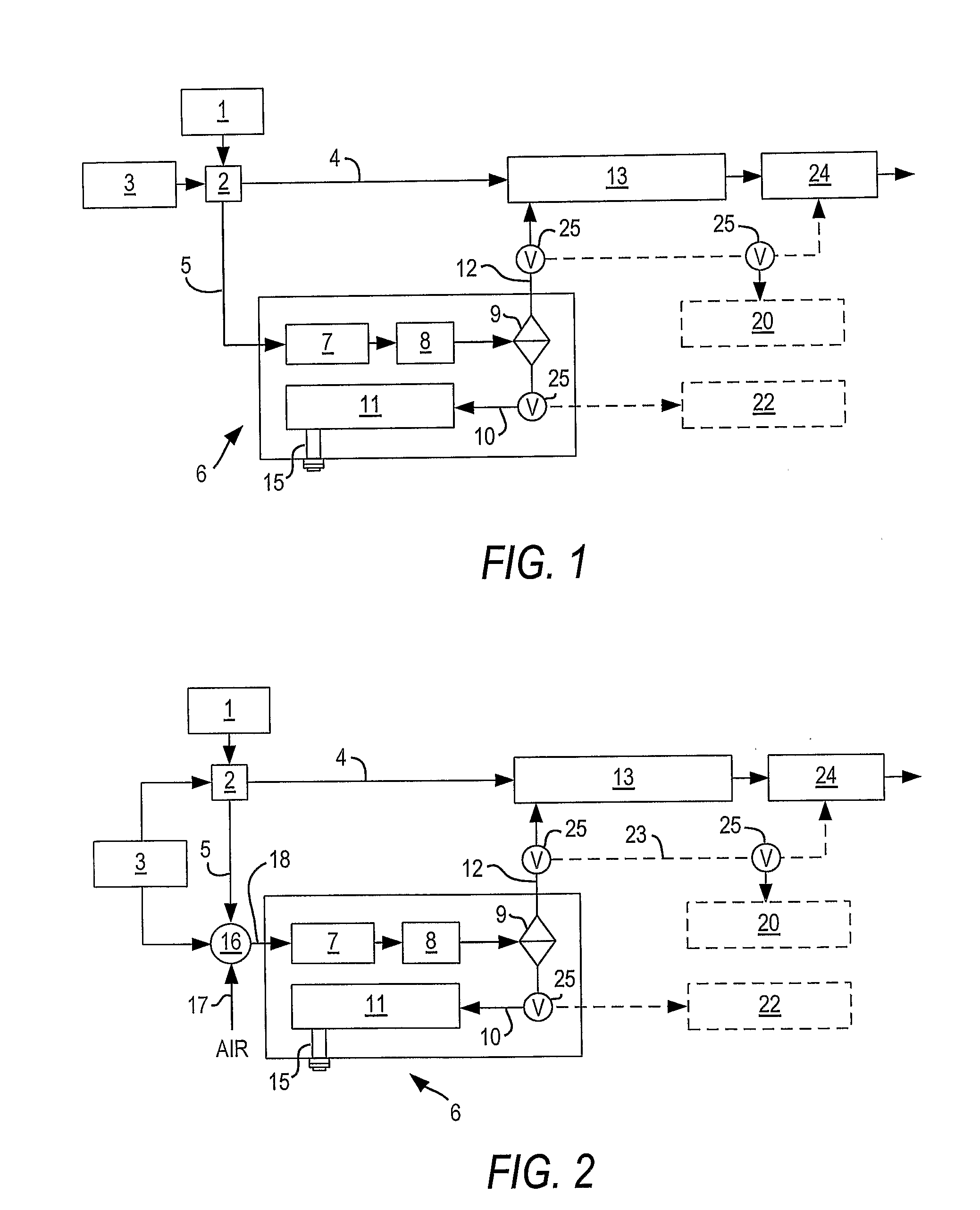Method for on board decarbonization of hydrocarbon fuels in a vehicle
a technology for hydrocarbon fuels and vehicles, applied in fuel systems, non-fuel substance addition to fuels, inorganic chemistry, etc., can solve the problems of insufficient reduction of co2 to maintain an acceptable level, inconvenient operation, and insufficient reduction of co2 to achieve the effect of maintaining an acceptable level of co2
- Summary
- Abstract
- Description
- Claims
- Application Information
AI Technical Summary
Benefits of technology
Problems solved by technology
Method used
Image
Examples
first embodiment
[0023]In the first embodiment, shown in FIG. 1, all or a portion of the fuel is fed to the decomposer 7 where it decomposes or cracks in the absence of air, thereby producing elemental carbon and hydrogen. Depending upon the thermal decomposition efficiency, it is possible that gaseous hydrocarbon compounds will be produced along with the hydrogen. These gaseous hydrocarbon compounds can include methane, ethane, and traces of C3 compounds. Where the fuel contains oxygenates, the thermal decomposition products will include CO and CO2.
[0024]The fuel supplied to the decomposer 7 is vaporized, either before or inside the decomposer 7. The thermal decomposition can be achieved by thermocatalysis, a plasma process, or other industrial decomposition processes known to, or to be developed by the art. The heat necessary for the decomposition will be provided by an external source such as electricity, hot exhaust gases, a dedicated burner, or other means presently known in the art or to be de...
second embodiment
[0027]In the second embodiment, as illustrated schematically in FIG. 2, the fuel coming from fuel system 2 through line 5 is vaporized and mixed with a controlled amount of air (17) in the mixing unit 16. This air-fuel mixture (18) is then fed to decomposer 7 in decarbonization unit 6 where exothermic combustion and endothermic decomposition occur simultaneously using catalytic or non-catalytic media. In this process, the heat released by the partial oxidation reaction will provide all or part of the heat necessary to achieve the thermal decomposition of the hydrocarbon fuel into carbon and a hydrogen-rich gas stream.
[0028]The ratio of the air-fuel mixture introduced into decomposer 7 is adjusted in order to achieve the desired decomposition temperature. External heating, such as the passage of hot exhaust gases through a heat exchanger, can be employed, if necessary, to supplement the internal heating in order to minimize the fuel energy penalty. Thereafter, the temperature is redu...
PUM
 Login to View More
Login to View More Abstract
Description
Claims
Application Information
 Login to View More
Login to View More - R&D
- Intellectual Property
- Life Sciences
- Materials
- Tech Scout
- Unparalleled Data Quality
- Higher Quality Content
- 60% Fewer Hallucinations
Browse by: Latest US Patents, China's latest patents, Technical Efficacy Thesaurus, Application Domain, Technology Topic, Popular Technical Reports.
© 2025 PatSnap. All rights reserved.Legal|Privacy policy|Modern Slavery Act Transparency Statement|Sitemap|About US| Contact US: help@patsnap.com


